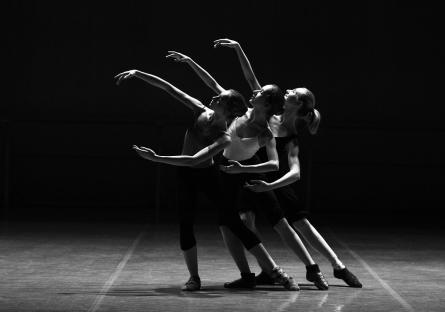This article appears for archival purposes. Any events, programs and/or initiatives mentioned may no longer be applicable.

Gene Kelly once said of his artform, "you dance love, and you dance joy, and you dance dreams." When it comes to elevating your mood, few things can raise your spirits faster than cutting a rug to a song you love. Dancing is more than good fun, though: it’s a great way to stay healthy and promote inner wellness. For this week’s Wellness Wednesday, we look at how a little bit of mambo, rhumba, tango, foxtrot, and swing goes a long way.
Boosts Cardiovascular Health
Whether you’re partner-dancing or getting down by yourself on the dancefloor, moving to music offers some of the same benefits as aerobic exercise. Like doing aerobics, dancing improves cardiovascular function. Dancing improves your circulation, and studies have found that people who regularly engage in moderate-intensity dancing (i.e. to the point that it causes you to sweat) are 46% less likely to develop heart disease.
Improves Balance & Flexibility
Dancing makes your muscles more supple and limber by stretching the limbs of your body. This stretching improves flexibility and builds strength, which also contributes to a more rooted sense of balance. Improved flexibility can have a powerful impact on your health as it can help:
- Reduce risk of injury
- Improves posture
- Relieves pain and stress
- Enhances circulation
- Improves mobility
- Releases muscle tension
- Ease lower back pain
A Good Way to Burn Fat
Dancing is not only an effective way to burn calories and lose weight; it’s also one of the more reliable ways to do it. Studies have found that people who commit to dancing on a regular basis show higher rates of success with completing their weight loss goals. Part of the reason why this is is because dancing is fun and unpredictable. With different types of songs to dance to and new partners and environments to interact with, it’s harder to fall into a rut than with other forms of exercise.
Maintains Bone Density
Much like swimming or using a stationary bike, dancing helps maintain bone density and can even build new bone mass. Research has found that dancing can help older adults reverse some of the effects of their osteoporosis. Some forms of dancing are high impact while others are low. In general, the faster styles like salsa and hip-hop dancing are more intense on the body than slower styles like waltzing.
Helps Prevent Memory Loss
Learning dance steps can help improve cognition and memorization. Studies have found that social dancing could reduce the risk of cognitive decline in old age. In addition, dancing can promote a feeling of relaxation and accomplishment by releasing dopamine and endorphins. These “happy hormones” can help alleviate stress and depression.
How to Get Started
As always: be sure to check with your doctor to make sure you don’t have any medical conditions that would make frequent dancing unwise. Whether you choose to take in-person classes or learn via videos, keep some of these principles in mind when you’re looking to get your dance on:
- Hydrate! Drink plenty of water before, during, and after dancing.
- Wear the right shoes. You need shoes with good support, flexibility, and traction. A good dancing shoe will usually have a flat sole with cushioning for comfort to support you when you’re making high impact movements and a pivot point on the sole to make it easier to turn and spin.
- Always warm-up before dancing (stretching is a must!)
- Go slow when it comes to adding new moves to your repertoire: you’re most at risk for injuring yourself while learning a new technique
- When it comes to clothing, go for the Goldilocks sweet spot: not too tight nor too baggy. Either of those types of clothing will restrict your movement. Dress for comfort.
Article by Austin Brietta
Want more wellness tips? Check out these stories: